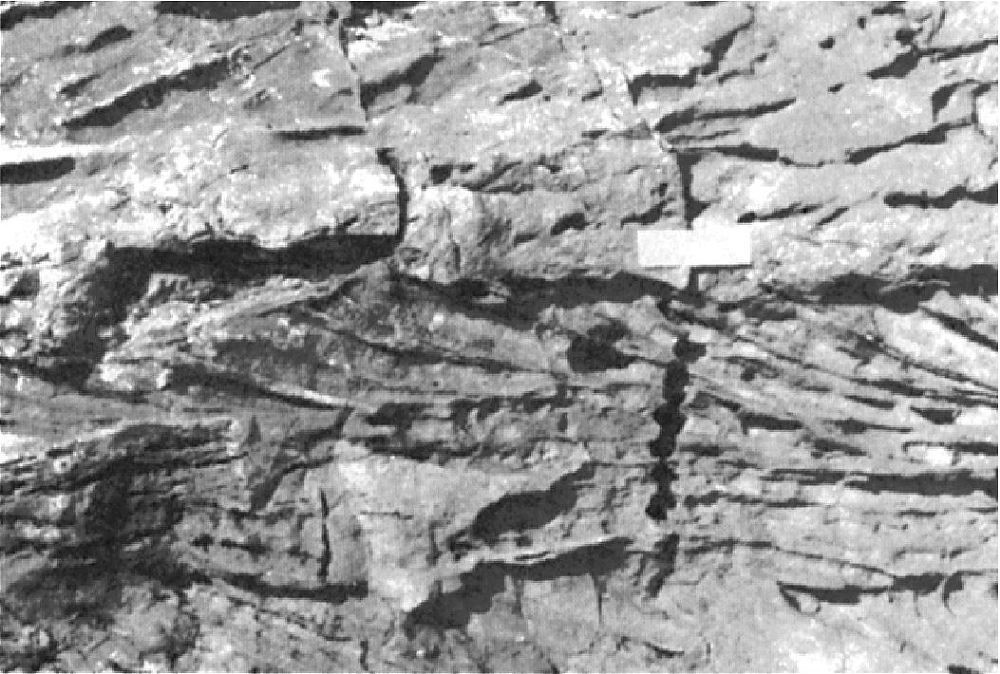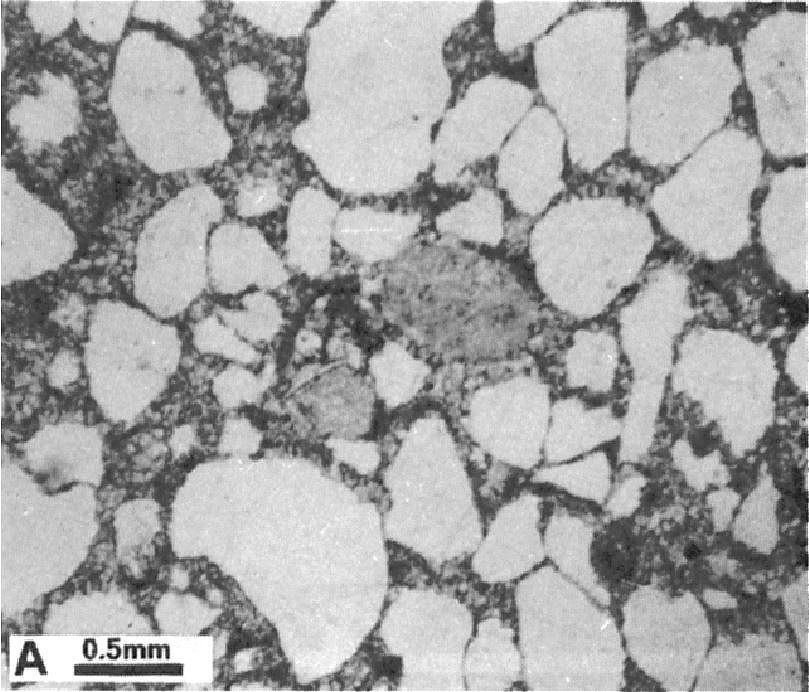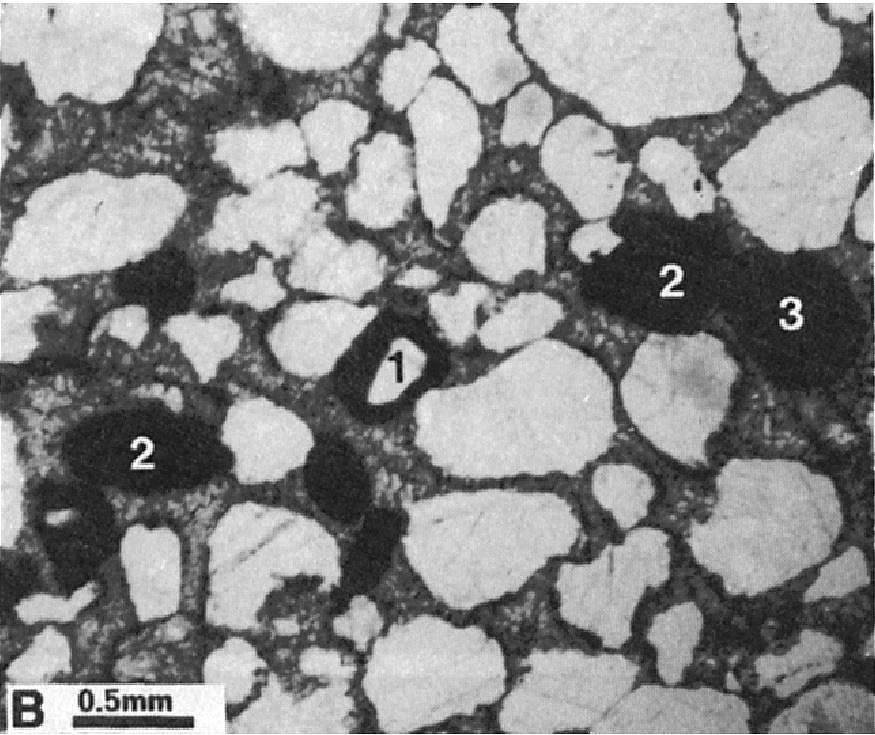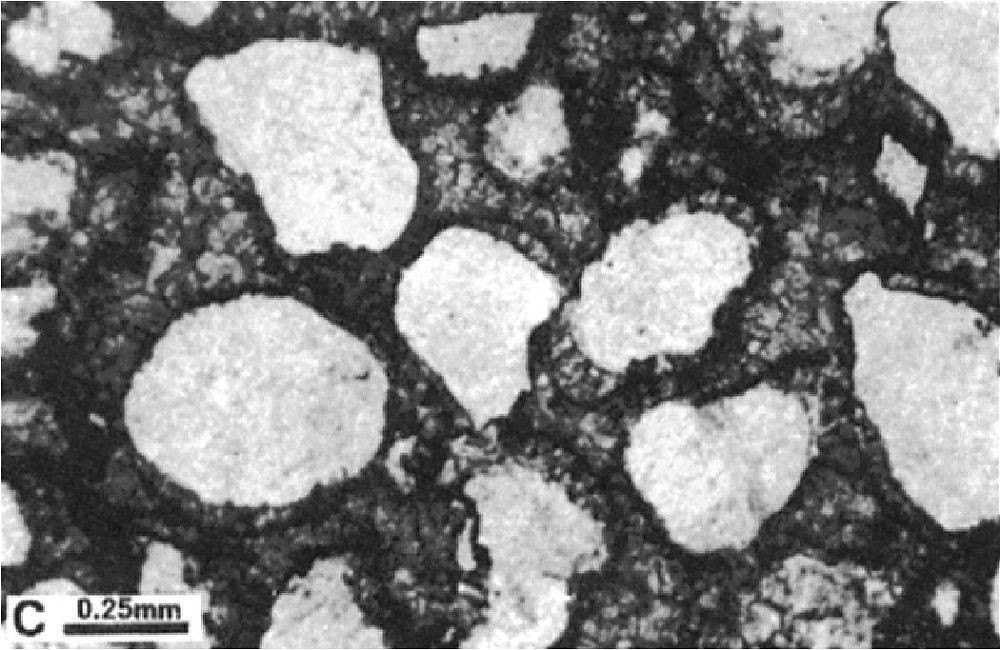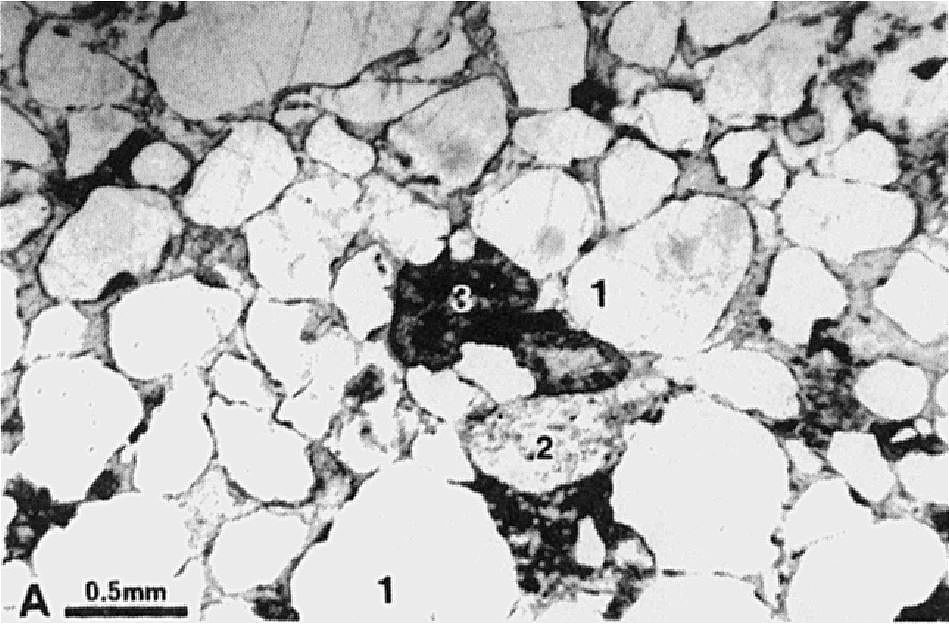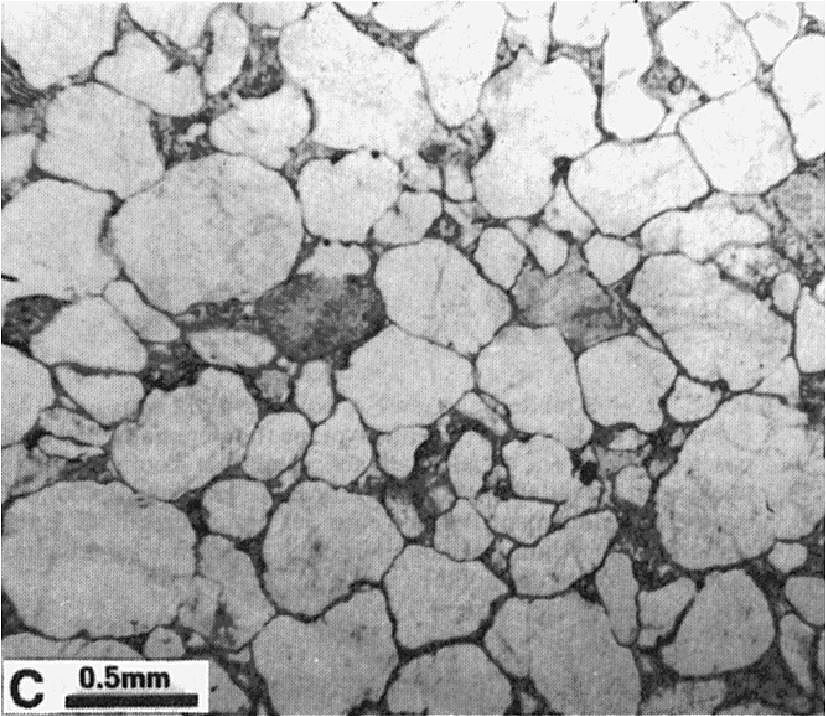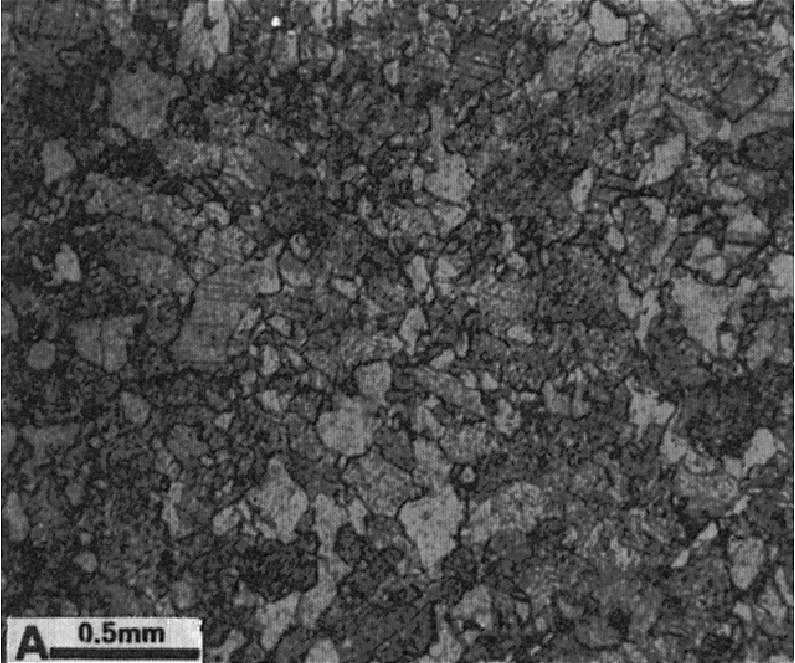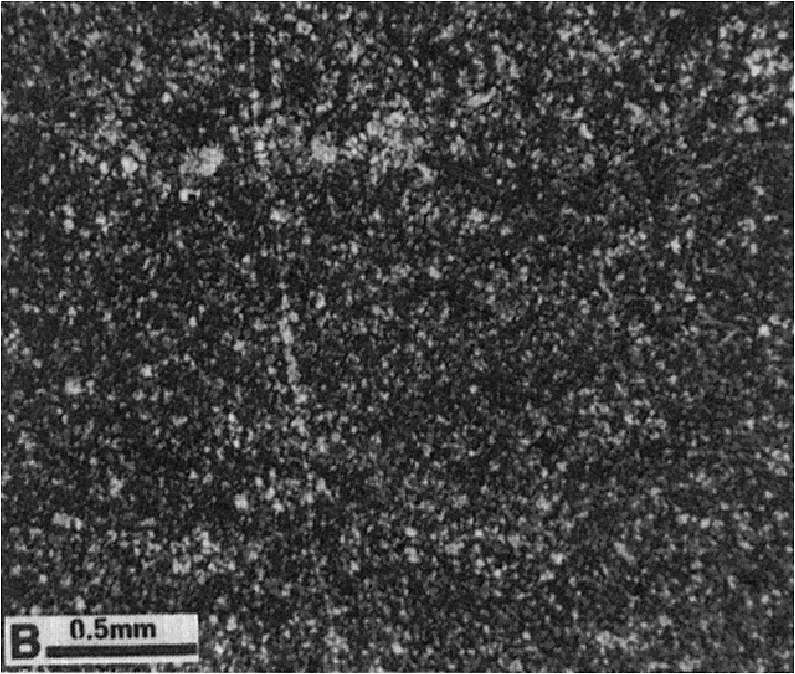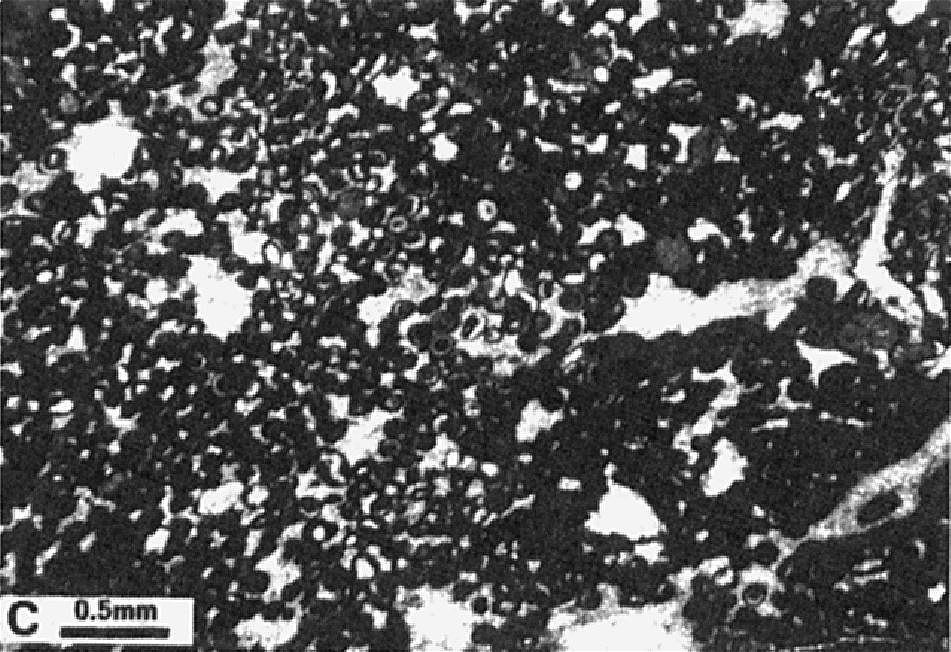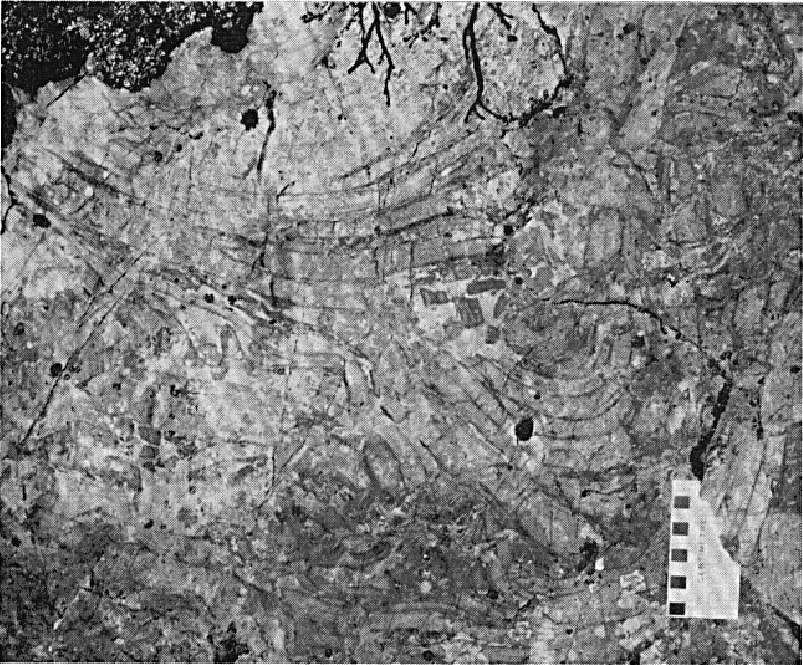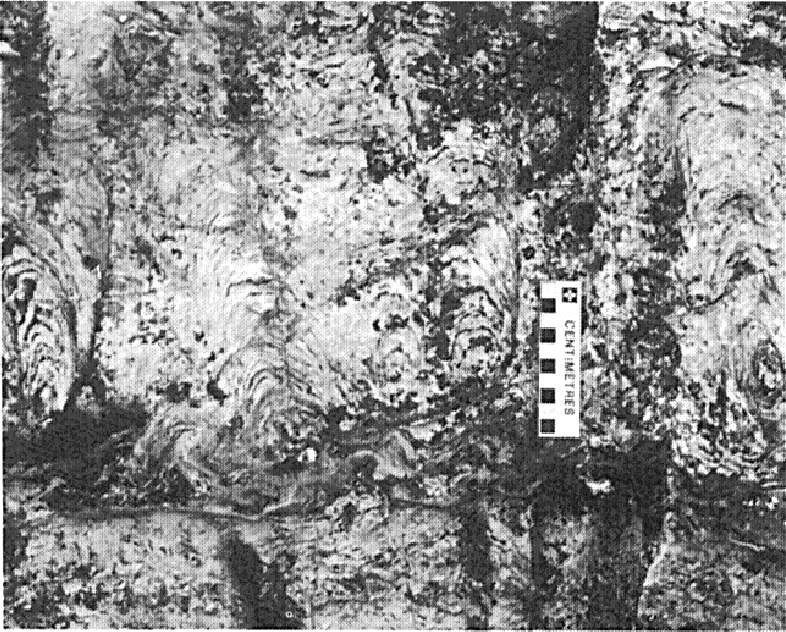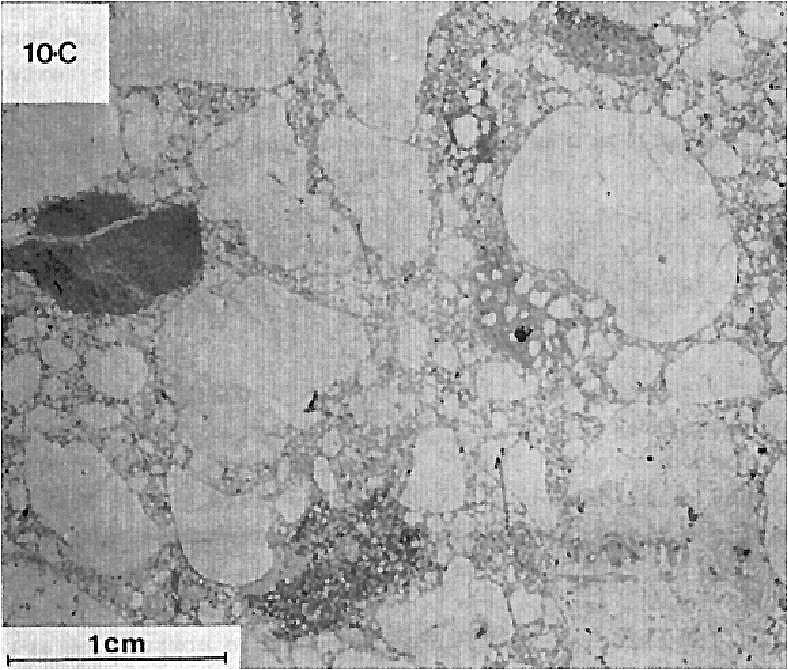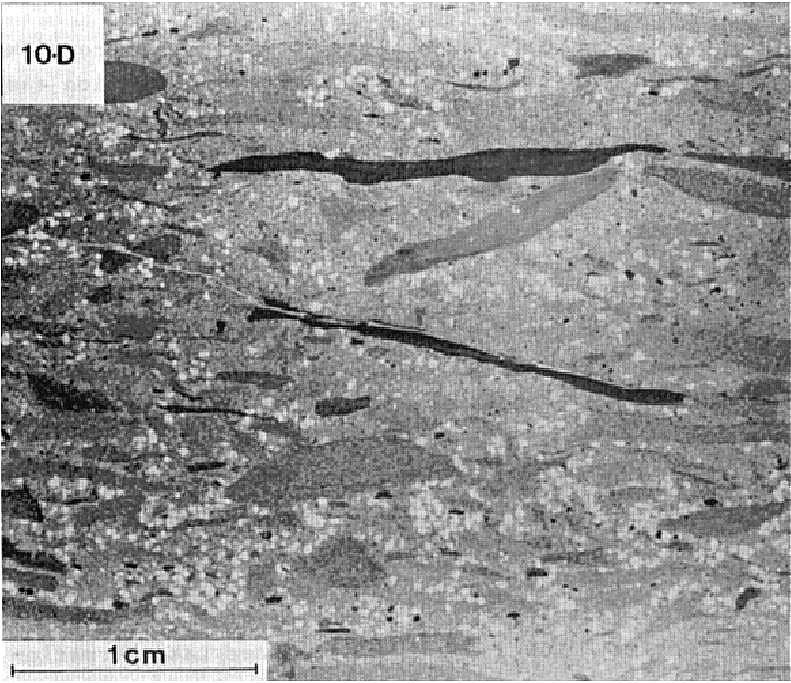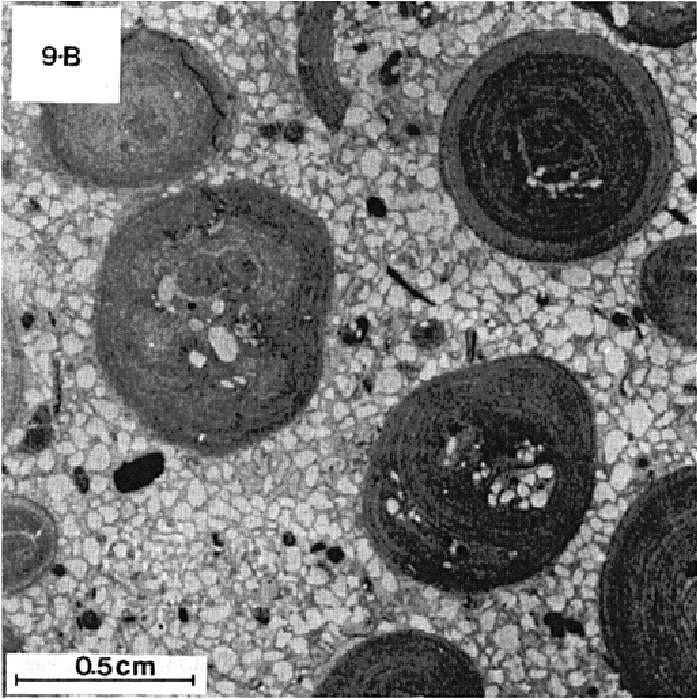
DISCLAIMER: This English version is translated from the original French. In case of any discrepancy, the French version shall prevail.
| Author(s): | Dimroth, 1968 |
| Age: | Paleoproterozoic |
| Stratotype: | The type locality is at Alder Hill, east of the southern bay of Chakonipau Lake (approximate UTM NAD83 coordinates, Zone 19: 534710 mE, 6227145 mN), where continuous outcrops display a cross-section typical of the entire formation (Dimroth, 1978). |
| Type area: | Otelnuk Lake area, in the area SE of Chakonipau Lake (NTS sheet 24C01) |
| Geological province: | Churchill Province |
| Geological subdivision: | New Quebec Orogen (Labrador Trough) / Cambrien, Howse, Romanet (formerly Wheeler) and Schefferville lithotectonic zones |
| Lithology: | Quartzitic arenite, dolomitic sandstone, dolomite, siltstone, mudstone, arkose, conglomerate, schist |
| Category: | Lithostratigraphic |
| Rank: | Formation |
| Status: | Formal |
| Use: | Active |
Background
The name Alder Formation was introduced by Dimroth (1968) to refer to a sedimentary assemblage of stromatolitic dolomite, calcarenite, dolomitic sandstone and quartzitic arenite east of the southern bay of Chakonipau Lake (NTS sheet 24C01). Rocks were mainly described by Dimroth (1964, 1965, 1966, 1969, 1972, 1978), but were also mapped by Hashimoto (1964), Dressler (1973, 1979), Clark (1984, 1986, unpublished data), Brouillette (1989) and Girard (1984, 1988). Finally, they were studied by Kish and Tremblay-Clark (1978) to assess their mineral potential.
Description
The Alder Formation is an autochthonous/parautochthonous or allochthonous sedimentary unit consisting mainly of grey stromatolitic dolomite, calcarenite, dolomitic sandstone and white quartzitic arenite. It is characterized by significant facies changes (Dimroth, 1969, 1978). Five regional facies are recognized: 1) a western marginal facies consisting mainly of dolomitic sandstone; 2) a submarginal facies of stromatolitic dolomite or calcarenite; 3) a dolomitic basin facies characterized by a sequence of alternating beds of stromatolitic dolomite and dolomitic sandstone; 4) a sandy basin facies consisting essentially of a thick sequence of white quartzitic arenite, dolomitic sandstone and impure quartzitic sandstone; and 5) an eastern marginal facies composed of white quartzitic arenite and dolomitic sandstone with local lenses of sandstone conglomerate, and gneiss and granite pebble conglomerate (Dimroth, 1970, 1978; Dimroth et al., 1970). The type locality is located at Alder Hill, east of the southern bay of Chakonipau Lake (NTS sheet 24C01) (Table 1; Dimroth, 1969, 1978). Other slightly simplified stratigraphic sections are located in other areas (Table 2; Dimroth, 1969, 1978).
The type locality constitutes a transition between dolomitic and sandy basin facies (Dimroth, 1978). At the type locality, the Alder Formation is divided into two members. The lower member is ~300 m thick and consists mainly of massive, grey quartzitic arenite having a white alteration patina. It contains a few beds (6-10 m thick) of dark grey dolomitic sandstone displaying crossbedding and a brown alteration patina, and a few beds (2-6 m thick) of laminated grey mudstone. The upper member has a thickness of ~66 m. It consists of an interbedded sequence of dolomitic sandstone having a brown alteration patina and grey stromatolitic dolomite having a light grey alteration patina. Approximately 6 m of coarse-grained dolomitic sandstone having a brown alteration patina completes the sequence (Dimroth, 1978).
Table 1: Characteristic of the Type Locality
| Type Locality: Alder Hill, east of the southern bay of Chakonipau Lake (approximate coordinates: UTM NAD83, zone 19, 534710 mE, 6227145 mN) | ||||||||||
| Member | Thickness (m) | Description | ||||||||
| Upper | 6 | Coarse-grained dolomitic sandstone having a brown patina | ||||||||
| 60 | Dolomitic sandstone having a brown patina; interbedded grey stromatolitic dolomite having a grey patina | |||||||||
| Lower | 300 | Massive grey quartzitic arenite having a white patina; some beds (6-10 m thick) of dark grey dolomitic sandstone having a brown patina; some beds (2-6 m thick) of grey mudstone | ||||||||
| Fault contact | ||||||||||
| Reference: Dimroth (1978) | ||||||||||
Table 2: Characteristics of Representative Localities
| Locality | North of Pistolet Lake | NE of Lace Lake | Nona Lake | |
| Facies |
Western marginal facies |
Western marginal facies | Transition from western marginal facies to submarginal facies | |
| Grey stromatolitic dolomite having a grey patina Interbedded stromatolitic dolomite, calcarenite and dolomitic sandstone – 60 m |
Grey stromatolitic dolomite; interbedded dolomitic sandstone having a brown patina and calcarenite – 30 m Grey dolomitic sandstone having a brown patina and calcarenite – 45 m White quartzitic arenite |
Interbedded sequence of grey stromatolitic dolomite having a grey patina and grey dolomitic sandstone having a brown patina, in beds 0.2 to 1.8 m thick – 75 m | ||
| Grey dolomitic sandstone having a brown patina – 90 m | Red and green mudstone, siltstone and very fine-grained sandstone, with orange dolomite beds Dolomitic sandstone and calcarenite White quartzitic arenite – 45 m |
Grey dolomite having a brown patina, sandstone and calcarenite – 4 m | ||
| Locality | Trident Lake | North of Veronot Lake | SW of Otelnuk Lake | |
| Facies | Submarginal facies | Submarginal facies | Submarginal facies | |
| Grey stromatolitic dolomite having a grey patina; interbedded grey calcarenite having a grey patina – 100 m | Grey stromatolitic dolomite having a brown patina – 60 m | Grey stromatolitic dolomite having a brown patina – 150 m | ||
| Base not outcropping | Base not outcropping | |||
| Locality | Ritchie Lake | SW of Pas Lake | SW of Calonne Lake | |
| Facies | Submarginal facies | Sandy basin facies | Sandy basin facies | |
| Grey stromatolitic dolomite having a light grey patina, a few beds (3 m thick) of massive grey dolomite having a buff patina – 150 m | Massive, medium to coarse-grained grey sandstone; lesser amount of impure sandstone – 15 m Grey stromatolitic dolomite having a light grey to brown patina or calcarenite – 10 m Massive, medium to coarse-grained grey sandstone; lesser amount of impure sandstone – >150 m |
Grey stromatolitic dolomite having a grey patina or calcarenite having a brown patina – 10 m Grey quartzitic sandstone having a grey patina – ? |
||
| Base not outcropping | Base not outcropping | Base not outcropping | ||
| Locality | North of Calonne Lake | Alder Hill | SW of Castignon Lake | |
| Facies | Sandy basin facies | Transition from dolomitic basin facies to sandy basin facies | Dolomitic basin facies | |
| Massive grey dolomite having a beige patina – 20 m Grey quartzitic arenite having a white patina; lesser amount of thick dolomitic sandstone beds having a brown patina; lesser amount of shale – 165 m Grey stromatolitic dolomite having a grey patina; interbedded dolomitic sandstone and calcarenite having a brown patina – 10 m Massive grey dolomite having a beige patina – 30 m Grey quartzitic arenite having a white patina – 150 m |
Coarse-grained dolomitic sandstone having a brown patina; interbedded succession of grey stromatolitic dolomite having a grey patina and grey dolomitic sandstone having a brown patina – 150 m Massive grey quartzitic arenite having a white patina; interbedded (6-10 m thick) grey dolomitic sandstone having a brown patina; interbedded (2-6 m thick) grey mudstone – 300 m |
Interbedded sequence (0.3-1.8 m thick) of grey stromatolitic dolomite having a grey patina and grey dolomitic sandstone having a brown patina – 90 m Grey dolomitic sandstone having a brown patina; locally interbedded white quartzitic arenite – 150 m |
||
| Base not outcropping | Base not outcropping | Base not outcropping | ||
| Locality | West of Castignon Lake | NW of Castignon Lake | Minowean Lake and west of Portage Lake | |
| Facies | Dolomitic basin facies | Transition from dolomitic basin facies to sandy basin facies | Sandy basin facies | |
| Interbedded sequence (0.3-1.8 m thick) of grey stromatolitic dolomite having a grey patina and grey dolomitic sandstone having a brown patina – 150 m | Interbedded sequence (0.3-1.8 m thick) of grey stromatolitic dolomite having a grey patina and grey dolomitic sandstone having a brown patina – 180 m | Grey dolomitic sandstone having a brown patina with lenses of grey dolomite having a grey patina – 240 m Alternating beds (0.02-0.5 m thick) of dolomitic sandstone and white quartzitic arenite – 120 m |
||
| Grey dolomitic sandstone having a brown patina; interbedded (6-12 m thick) white quartzitic arenite; locally interbedded red mudstone and siltstone – 150 m | White quartzitic arenite – 30 m | White quartzitic arenite – 150 m | ||
| Locality | Du Chambon Lake | West of Romanet Lake | Romanet River | |
| Facies | Dolomitic basin facies | Dolomitic basin facies | Transition from dolomitic basin facies to eastern marginal facies | |
| Interbedded sequence (0.3-1.8 m thick) of grey stromatolitic dolomite having a grey patina and grey dolomitic sandstone having a brown patina – 10 m Grey dolomitic sandstone having a brown patina with beds and lenses of grey dolomite having a grey patina – ? |
Interbedded sequence (0.3-1.8 m thick) of grey stromatolitic dolomite having a grey patina and grey dolomitic sandstone having a brown patina Grey dolomitic sandstone having a brown patina with beds and lenses of grey dolomite having a grey patina – 210 m White quartzitic arenite – 90 m |
Grey dolomitic sandstone having a brown patina with beds and lenses of grey dolomite having a grey patina, changing towards the SW to an interbedded sequence of stromatolitic dolomite and dolomitic sandstone – 210 m White quartzitic arenite – 90 m |
||
| Base not outcropping | ||||
| Locality | NE of Romanet Lake | East of Romanet Lake and Wheeler River | ||
| Facies | Eastern marginal facies | Eastern marginal facies | ||
| Grey dolomitic sandstone having a brown patina with beds and lenses of grey dolomite having a grey patina – >150 m White quartzitic arenite. Locally, lesser amount of conglomerate and sandstone – 90 m |
Grey dolomitic sandstone having a brown patina with beds and lenses of grey dolomite having a grey patina. Locally, gneiss and granite pebble conglomerate – 150 m White quartzitic arenite – 60 m |
|||
| Reference: Dimroth (1978) | ||||
The rocks of the Alder Formation were deposited in a subcoastal and shallow marine environment. They are derived from Archean sources to the west and east of the Labrador Trough (Dimroth, 1978). They are metamorphosed to the greenschist or subgreenschist facies (Dimroth and Dressler, 1978).
The economic potential of the Alder Formation consists of epigenetic Pb-Zn mineralization hosted in stromatolitic dolomites, uranium vein mineralization hosted in quartzite arenites, and epigenetic and syntectonic copper-uranium mineralization emplaced in shear zones affecting arenites and pelites of the formation (Clark and Wares, 2004).
Some 16 informal units have been recognized in the Alder Formation, numbered 1 to 21; numbers 5 and 16 to 19 were not used.
Alder Formation, Undivided (pPad): Dolomite, Quartzitic Arenite, Dolomitic Sandstone, Arkose, Calcarenite, Conglomerate, Mudstone, Siltstone
This undivided unit includes all the rocks found in the Alder Formation. The unit thus consists of dolomite, quartz arenite, dolomitic sandstone, arkose, calcarenite, conglomerate, mudstone and siltstone.
Alder Formation 1 (pPad1): Dolomitic Sandstone with a Beige or Brown Patina; Interbeds of Dolomite and/or Stromatolitic Dolomite
Unit pPad1 consists mainly of grey dolomitic sandstone having a beige or brown alteration patina (Dimroth, 1969, 1978; Brouillette, 1989). In the Minowean Lake area, dolomitic sandstone occurs in massive beds, centimetre to metre thick, interbedded with thin dolomite beds or lenses (Brouillette, 1989). SW of Castignon Lake and NW of Romanet Lake, dolomitic sandstone also includes interbedded grey, white or cream stromatolitic dolomite (Dimroth, 1978). According to Brouillette (1989), sandstone has a light grey to slightly pinkish facies west and SW of Minowean Lake, and a dark grey facies east of the lake. The dark grey colour is due to disseminated graphite in the carbonate cement. Cross and oblique bedding are common and allow the determination of sedimentary polarity (Dimroth, 1978; Brouillette, 1989). At Minowean Lake, dolomitic sandstone is in gradual contact with underlying quartzitic arenite (pPad4). It is distinguished from the latter by a thicker alteration crust and a more intense reaction to hydrochloric acid. Upwards, dolomitic sandstone is interbedded with massive grey dolomite having a brown or beige patina (pPad6) (Brouillette, 1989).
In thin sections, dolomitic sandstone consists of a terrigenous detrital fraction (70-80%) and an allochemical detrital fraction (0-10%). The terrigenous fraction is composed of quartz and partially or completely sericitized feldspar. The allochemical fraction contains oolites, oolitic intraclasts as well as intraclasts formed of oolites, pelloids and quartz. Allochemical constituents are generally coarser grained than terrigenous fragments. The matrix constitutes 5 to 10% of the rock and consists of microspathic to spathic cement (Brouillette, 1989).
Alder Formation 2 (pPad2): Grey Dolomitic Sandstone with a Brown Patina; Interbeds of Grey, White or Beige Stromatolitic Dolomite
Unit pPad2 consists of grey dolomitic sandstone having a brown alteration patina and interbedded grey, white or cream stromatolitic dolomite (Dimroth, 1969, 1978). This unit forms, together with unit pPad9, the upper member of the Alder Formation at Alder Hill (type locality). Dolomitic sandstone occurs in thick, cross-bedded beds. It is composed of quartz fragments (40-60%), oolites (0-15%), limestone intraclasts (0-15%) and calcareous siltstone fragments (0-5%) in a coarse-grained dolomite matrix. The unit is distinguished from unit pPad9 by the presence of interbedded stromatolitic dolomite.
Alder Formation 3 (pPad3): Grey Dolomite with a Beige Patina; Some Dolomitic Sandstone and Quartzitic Arenite with a White Patina
Unit pPad3 is located at the SE end of Otelnuk Lake (Dimroth, 1978) and in the Patu Lake area (Clark, unpublished). It consists mainly of grey dolomite having a beige alteration patina and includes lesser amounts of dolomitic sandstone and white patina quartzitic arenite.
Alder Formation 4 (pPad4): Quartzitic Arenite with a White Patina; May Include Some Subarkose, Dolomitic Sandstone, Dolomite, Mudstone or Sericite Schist
Unit pPad4 consists mainly of quartzitic arenite. It forms the lower part of the Alder Formation at the type locality (Table 1) (Dimroth, 1978). Quartzitic arenite is grey to greenish grey in fresh surface and white in altered surface. It occurs in thick, generally massive, locally well bedded, fine to coarse grained beds (Dimroth, 1969, 1978; Dressler, 1979; Girard, 1988; Brouillette, 1989; Clark, 1986, unpublished). Primary sedimentary structures are usually absent (Brouillette, 1989). The rock is mainly composed of quartz with lesser amounts of feldspar (Dimroth, 1978; Dressler, 1979). Quartzitic arenite is usually slightly deformed. In the Mistamisk and Romanet lakes area, however, the rock is highly deformed. The primary clastic structure is lost and the rock has metamorphic textures (Dimroth, 1978).
Quartzitic arenite may be interbedded (centimetric to metric thickness) with lesser amounts of subarkose, dolomitic sandstone, dolomite, mudstone or sericite schist (Dimroth, 1966, 1969, 1978; Dressler, 1979; Brouillette, 1989). According to Dimroth (1978), sandstone conglomerate occurs locally NE and east of Romanet Lake.
In thin sections, quartzitic arenite is composed of quartz (70-80%), sericitized feldspar (1-2%) and oolites (1-2%) in a matrix (10-15%) essentially formed of micas. Accessory minerals are zircon, apatite and tourmaline (Girard, 1988).
Alder Formation 6 (pPad6): Dolomite and Brecciated Grey Dolomite with a Light Brown or Beige Patina (Synsedimentary Breccia); Local Interbeds of Dolomitic Sandstone, Siltstone or Black Slate
Unit pPad6 consists mainly of dolomite and brecciated grey dolomite having a light brown or beige alteration patina. Locally, dolomite includes centimetre-scale interbedded dolomitic sandstone, siltstone or black slate (Clark, 1984; Brouillette, 1989). Massive dolomite is characterized by the presence of numerous quartz veinlets (Hashimoto, 1964; Brouillette, 1989). At Minowean Lake, Brouillette (1989) distinguishes two types of dolomite: silty dolosparite and microspathic dolomite. Silty dolosparite generally contains 1 to 5% detrital elements. Terrigenous fragments consist mainly of quartz and feldspar (<1%). The allochemical fraction contains oolites, pelloids and some oolite-pelloid intraclasts. Microspathic dolomite is restricted to a few outcrops on the SE shore of Minowean Lake. The rock is slightly graphitic and lacks detrital fragments.
In the Cambrian Lake area, dolomite is in sharp and conformable contact with the overlying Lace Lake Formation. East of Cambrien Lake, it appears to be repeated higher in the sequence. Dolomite is laminated and typically brecciated. It consists of synsedimentary breccia containing dolomite fragments in a dolomite or sandy dolomite matrix. Brecciated dolomite occurs in slightly or undeformed beds up to 0.6 m thick. Brecciation of dolomite is due to synsedimentary slippage. The degree of fragmentation is highly variable. Beds are broken into plates that have been rotated to a greater or lesser extent. Some beds display fragmentation into plates accompanied by creep. In places, fragments are randomly arranged and primary bedding cannot be determined. Fragments are angular, 1 to 50 cm long, and darker grey than the matrix (Clark, 1984).
In the area NW of Wakuach Lake, 3 to 9 m thick beds of massive grey dolomite having a light brown alteration patina are observed within unit pPad4. Massive dolomite beds change laterally to dolomitic sandstone (Dimroth, 1978).
Alder Formation 7 (pPad7): Interbedded Stromatolitic Dolomite and Bedded or Massive Sandy Dolomite with a Brown or Beige Patina; Local Interbeds of Dolomitic Sandstone
Unit pPad7 consists of interbedded stromatolitic dolomite and bedded or massive sandy dolomite having a brown or beige alteration patina. It locally includes interbedded dolomitic sandstone (Dimroth, 1969, 1978; Clark, 1986). The thickness of these interstratifications generally varies from 10 cm to 3 m. Stromatolitic dolomite and sandy dolomite are commonly light grey, beige or light beige in fresh surface and light grey, brown or beige in altered surface. Dolomitic sandstone is grey in fresh surface and brown in altered patina. Stromatolites typically occur in columns a few centimetres wide (~5-8 cm) and up to 25 cm high. In places, dolomitic sandstone exhibits centimetric crossbedding. Sandstone or sandy rocks generally contain a minor amount of rounded quartz grains, 0.5 to 1 mm in diameter. Dolomite is commonly cut by numerous quartz veins (Dimroth, 1966, 1978; Clark, 1986). Unit pPad7 is similar to unit pPad1, but with a predominance of dolomite over dolomitic sandstone. Its much higher content of sandy dolomite and dolomitic sandstone distinguishes it from unit pPad10.
Alder Formation 8 (pPad8): Impure Quartzitic Sandstone with a Dark Grey Patina
Unit pPad8 consists of very thick beds of impure quartzitic sandstone. This unit is a common constituent of the Alder Formation at the NW end of Wakuach Lake and at Calonne Lake (Dimroth, 1978). Impure quartzitic sandstone is generally dark grey in altered patina. It is composed of well-rounded quartz grains up to 1 cm in diameter, quartzitic sand and fragments of dolomitic siltstone, dolomicrite and shale in a paste of chert and dolomitic siltstone or dolomitic sandstone fragments. According to Dimroth (1978), rocks of unit pPad8 originated from a relatively close source to the east. They would have been deposited on a westward slope in the area NW of Wakuach Lake. The source area would reflect the first appearance of a geanticline zone in the centre of the Labrador Trough that extended further east.
Alder Formation 9 (pPad9): Grey Dolomitic Sandstone with a Dark Brown Patina; Local Interbeds of Dolomite with a Brown Patina and Phyllite
Unit pPad9 consists mainly of grey dolomitic sandstone having a dark brown alteration patina (Dimroth, 1966, 1969, 1978; Girard, 1988). At Alder Hill (type locality), dolomitic sandstone forms most of the upper member of the Alder Formation. In the Romanet Lake area, north of Bertin Lake, unit pPad9 changes to the SW, i.e. towards the top which consists of a dolomite-dominated interbedded succession (unit pPad7). Dolomitic sandstone occurs in thick, cross-bedded beds. It contains quartz fragments (40-60%), oolites (0-15%) and limestone intraclasts (0-15%) as well as calcareous siltstone fragments (0-5%). Dolomitic sandstone locally includes centimetre-thick interbedded dolomite having a brown alteration patina and phyllites (Dimroth, 1966, 1969, 1978; Girard, 1988). In areas to the NE and east of Romanet Lake, interbedded dolomite forms ≤10% of the unit. Locally, dolomitic sandstone contains units of sandstone conglomerate (pPad4), and gneiss and granite pebble conglomerate (pPad13) (Dimroth, 1978).
Alder Formation 10 (pPad10): Light Grey Stromatolitic Dolomite with a Dark Brown Patina
Unit pPad10 consists of stromatolitic dolomite. It characterizes the Alder Formation between Véronot Lake and Maraude Lake, SW of Otelnuk Lake (Dimroth, 1978). Dolomite is light grey in fresh surface and dark brown in altered surface. It is fine grained and has a conchoidal fracture. Stromatolites generally form wavy stratification or bulbous structures ~5-8 cm in diameter. They are commonly cut by 1-2 mm wide quartz veins. Near Bricot Lake (sheet 24C01), the unit includes sandy dolomite having a brown alteration patina and mudrock (Dimroth, 1965, 1978).
Alder Formation 11 (pPad11): Pink, Brecciated, Rarely Oolitic or Algal Dolomite; Rare Interbeds of Sandy Dolomite or Calcarenite
Unit pPad11 consists of pink dolomite, typically brecciated and rarely oolitic or algal. In the area west of Cambrien Lake, it occurs as subparallel plates up to 0.6 m wide, folded in places and with planar stratification. It also forms smaller, angular and randomly oriented fragments. In places, beds are curved but not fragmented. The upper surface of the unit is wavy at a scale of about 0.3 m. Dolomite rarely contains interbedded sandy dolomite or calcarenite (Clark, 1984).
Alder Formation 12 (pPad12): Calcarenite with a Brown, Cream or Pink Patina
Unit pPad12 consists mainly of calcarenite. In the stratigraphic columns of Dimroth (1978, p. 77), calcarenite is always interbedded with other lithologies such as stromatolitic dolomite and dolomitic sandstone. However, calcarenite represents a distinct unit in the areas north of Pistolet Lake, NE of Lace Lake, north of Castignon Lake and north of Plissé Lake (Dimroth, 1969, 1978; Clark, 1986). Calcarenite also occurs south of Patu Lake (Clark, unpublished). It is grey in fresh surface and brown, cream or pink in altered surface. It generally occurs in thick, cross-bedded beds. Calcarenite is composed of calcareous pisolites and oolites. It also includes variable amounts of clastic fragments such as calcareous intraclasts and calcareous calcilutite and siltstone fragments. Clastic fragments are cemented by a dolomitic matrix (Dimroth, 1978).
Alder Formation 13 (pPad13): Gneiss and Granite Pebble and Cobble Conglomerate
Unit pPad13 was observed locally east of Romanet Lake. It consists of gneiss and granite pebble and cobble conglomerate (Dimroth, 1978). Pebbles and cobbles are 2 to 10 cm in diameter and are hosted in a slightly dolomitic arkose matrix.
Alder Formation 14 (pPad14): Red and Green Siltstone and Mudstone, Fine-Grained Sandstone, Interbeds of Dolomite with a Red, Orange or Beige Patina
Unit pPad14 consists of laminated red (red beds) and green siltstone and mudstone, very fine-grained sandstone, and interbedded dolomite having red, orange or beige alteration patina (Dimroth, 1969, 1978; Clark, 1984). Mudstone and siltstone display planar stratification and locally ripple crossbedding. According to Dimroth (1978), mudstone, siltstone and sandstone are similar to those of the marginal facies of the Lace Lake Formation in areas east of Lace Lake and west of Castignon Lake. Interbedded dolomite is 1 cm to 0.3 m thick. In the Cambrien Lake area, they can represent up to 10% of the unit, and are particularly observed near the top of the unit. Small-scale synsedimentary faults having displacements <2 cm are also reported (Clark, 1984).
Alder Formation 15 (pPad15): Grey and Green Mudstone and Siltstone; Local Interbeds of Dolomite with a Brownish Patina
Unit pPad15 is located in the Cambrien Lake area. It consists mainly of laminated and fissile grey and green mudstone and siltstone (Clark, 1984). These rocks are slightly to moderately calcareous. They commonly display planar, wavy and lenticular stratifications 1 to 10 mm thick. Cross bedding is observed in places. Mudstone and siltstone also include thinly interbedded dolomite having a brownish alteration patina. The presence of small-scale contoured beds and small synsedimentary faults is evidence of local synsedimentary deformation (Clark, 1984).
Alder Formation 20 (pPad20): Arkose, Quartzitic Arenite with a White Patina, Granite or Quartz Pebble Conglomerate
Unit pPad20 consists of arkose, quartzitic arenite having a white patina, and granite or quartz pebble conglomerate (Dressler, 1973, 1979). Arkose is pink or dark reddish brown, medium to coarse grained, locally microconglomeratic. According to Dressler (1979), arkose is derived from granitic rocks around Patu Lake. Quartzitic arenite is massive, pink or light grey in fresh surface, white in altered patina and fine to coarse grained. In thin sections, the rock contains minor amounts of dolomite and feldspar. Conglomerate is clast supported or paste supported. It contains angular to subrounded granite or quartz pebbles in an arkose matrix which may be dolomitic in places. Some fragments can reach up to 30 cm in diameter (Dressler, 1979).
Alder Formation 21 (pPad21): Grey Mudrock, Interbeds of White Quartzitic Arenite
Unit pPad21 consists of grey mudrock with interbedded white quartzitic arenite in altered patina (Dressler, 1973, 1979). The latter is fine to coarse grained and massive. In thin sections, it contains minor amounts of dolomite and feldspar.
Thickness and Distribution
The Alder Formation belongs to the Cambrien, Howse, Romanet (formerly Wheeler) and Schefferville lithotectonic zones, as defined by Clark and Wares (2004). It is only recognized in the central part of the Labrador Trough. It extends in a NW-SE direction from the Colombet Lake area to the Wakuach Lake area, ~200 km, and in an E-W direction from the Cambrien Lake area to the Romanet Lake area, ~100 km. Typical rocks of the formation are divided into five major regional facies (Dimroth, 1970, 1978; Dimroth et al., 1970). The distribution of these facies is shown in Table 2. In the area NW of Castignon Lake, the rocks equivalent to the Alder Formation were assigned by Dimroth (1970, 1978) and Dimroth et al. (1970) to a NW marginal facies. These rocks area described within the Pistolet Group.
The thickness of the Alder Formation varies from ~30 to 150 m near the western margin of the Trough (Clark, 1984, Dimroth, 1970, 1978). To the east, it reaches >600 m in the central part of the basin. Near the eastern margin of the Trough, the thickness is >200 m (Dimroth, 1970, 1978). At the type locality near Chakonipau Lake, it is estimated at 366 m (Table 1; Dimroth, 1978). Table 2 gives the approximate thickness of the different regional facies for some representative localities. The thickness of the formation is not known in the Du Chambon Lake area (Clark, 1986) and north of latitude 56°30’N (Dressler, 1979).
Dating
None.
Stratigraphic Relationship(s)
Deposition of rocks of the Alder formation took place between 2169 ±2 and 2142 +4/-2 Ma, i.e. during the depositional period of the first cycle (T. Krogh and B. Dressler, unpublished data cited by Clark, 1984, page 4; Rohon et al., 1993; Clark and Wares, 2004). Recently, U-Pb ages of 2166 ±4 and 2171 ±2 Ma were obtained by Corrigan et al. (2020) for the beginning of the first cycle.
The Alder Formation conformably overlies the Lace Lake Formation and is conformably overlain by the Uvé Formation (Dimroth, 1969, 1978; Dressler, 1979; Clark and Wares, 2004). The lower and upper contacts of the formation are generally well defined (Dimroth, 1969, 1978). At the type locality, however, the lower contact of the Alder Formation is not visible. In this area, the Lace Lake Formation is absent and the base of the Alder is marked by a fault contact (Table 1). The upper contact of the Alder Formation is in sharp contact with the overlying Uvé Formation (Dimroth, 1969, 1978). In the Minowean and Portage lakes area, the lower Alder-Lace Lake contact is visible in places. According to Brouillette (1989), this contact is marked by interbedded characteristic lithologies of both units. The upper Alder-Uvé contact was not observed in this area (Brouillette, 1989).
In the Du Chambon and Romanet lakes area, the contact of the Alder Formation with the Uvé Formation was observed by Clark (1986) on the north shore of Du Chambon Lake. In this area, the polarity is indicated by stromatolites and cross bedding in dolomite of the Alder Formation. Near the NW end of Du Chambon Lake, a thrust fault (Du Chambon Fault), mapped by Dimroth (1978) to the SE of the lake, places the Alder Formation adjacent to the Dunphy Formation (Seward Group) (Clark, 1986).
Paleontology
Dolomites of the Alder Formation locally exhibit cryptalgal and algal structures (stromatolites) (Dimroth, 1969, 1972, 1978).
References
Publications Available Through SIGÉOM Examine
BROUILLETTE, P. 1989. GEOLOGIE ET METALLOGENIE DE LA REGION DES LACS MINOWEAN ET DU PORTAGE (FOSSE DU LABRADOR). MRN. ET 88-06, 84 pages and 2 plans.
CLARK, T. 1984. GEOLOGIE DE LA REGION DU LAC CAMBRIEN – TERRITOIRE DU NOUVEAU-QUEBEC. MRN. ET 83-02, 77 pages and 1 plan.
CLARK, T. 1986. GEOLOGIE ET MINERALISATIONS DE LA REGION DU LAC MISTAMISK ET DE LA RIVIERE ROMANET. MRN. ET 83-22, 56 pages and 1 plan.
CLARK, T., WARES, R. 2004. SYNTHESE LITHOTECTONIQUE ET METALLOGENIQUE DE L’OROGENE DU NOUVEAU-QUEBEC (FOSSE DU LABRADOR). MRNFP. MM 2004-01, 182 pages and 1 plan.
CORRIGAN, D., SAPPIN, A.-A., HOULÉ, M. G., RAYNER, N., VAN ROOYEN, D. 2020. Corrugated Hills: les restes d’une grande province ignée d’environ 2,17 Ga dans la Fosse du Labrador. In Résumés des conférences et des photoprésentations, Québec Mines+Énergie 2019. MERN; DV 2019-01, 78 pages.
DIMROTH, E. 1964. GEOLOGIE DE LA REGION DU LAC ROMANET, NOUVEAU-QUEBEC. MRN. RP 523, 20 pages and 1 plan.
DIMROTH, E. 1964. PRELIMINARY REPORT, GEOLOGY OF ROMANET LAKE AREA, NEW QUEBEC. MRN. RP 523(A), 18 pages and 1 plan.
DIMROTH, E. 1965. GEOLOGIE DE LA REGION DU LAC OTELNUK, TERRITOIRE DU NOUVEAU-QUEBEC. MRN. RP 532, 30 pages and 1 plan.
DIMROTH, E. 1965. PRELIMINARY REPORT, GEOLOGY OF OTELNUK LAKE AREA, NEW QUEBEC TERRITORY. MRN. RP 532(A), 27 pages and 1 plan.
DIMROTH, E. 1966. GEOLOGIE DE LA REGION DU LAC DUNPHY, TERRITOIRE DU NOUVEAU-QUEBEC. MRN. RP 557, 24 pages and 1 plan.
DIMROTH, E. 1966. PRELIMINARY REPORT, GEOLOGY OF DUNPHY LAKE AREA, NEW QUEBEC TERRITORY. MRN. RP 557(A), 21 pages and 1 plan.
DIMROTH, E. 1969. GEOLOGIE DE LA REGION DU LAC CASTIGNON, TERRITOIRE DU NOUVEAU-QUEBEC. MRN. RP 571, 62 pages and 7 plans.
DIMROTH, E. 1969. PRELIMINARY REPORT, GEOLOGY OF THE CASTIGNON LAKE AREA, NEW QUEBEC TERRITORY. MRN. RP 571(A), 58 pages and 7 plans.
DIMROTH, E. 1972. STRATIGRAPHY OF PART OF THE CENTRAL LABRADOR TROUGH. MRN. DP 154, 304 pages and 6 plans.
DIMROTH, E. 1978. Région de la fosse du Labrador entre les latitudes 54° 30′ et 56° 30′. MRN. RG 193, 417 pages and 16 plans.
DRESSLER, B. 1973. GEOLOGIE DE LA REGION DU LAC PATU, TERRITOIRE DU NOUVEAU-QUEBEC. MRN. RP 603, 26 pages and 1 plan.
DRESSLER, B., CIESIELSKI, A. 1979. Région de la fosse du Labrador. MRN. RG 195, 136 pages and 14 plans.
GIRARD, A. 1984. LES INDICES MINERALISES DU LAC COLOMBET (FOSSE DU LABRADOR – NOUVEAU-QUEBEC). I N R S. MB 84-06, 67 pages and 1 plan.
GIRARD, A. 1988. GEOLOGIE ET METALLOGENIE DES INDICES CUPRIFERES ET URANIFERES DE LA REGION DU LAC COLOMBET (WAPANIKSKAN) – FOSSE DU LABRADOR. I N R S-GEORESSOURCES. MB 88-20, 85 pages and 2 plans.
HASHIMOTO, T. 1964. GEOLOGIE DE LA REGION DU LAC JOGUES, TERRITOIRE DU NOUVEAU-QUEBEC. MRN. RP 524, 13 pages and 1 plan.
HASHIMOTO, T. 1964. PRELIMINARY REPORT, GEOLOGY OF JOGUES LAKE AREA, NEW QUEBEC TERRITORY. MRN. RP 524(A), 11 pages and 1 plan.
KISH, L., TREMBLAY-CLARK, P. 1978. GEOCHIMIE ET RADIOACTIVITE DANS LA FOSSE DU LABRADOR. MRN. DPV 567, 73 pages.
Other Publications
DIMROTH, E. 1968. The evolution of the central segment of the Labrador geosyncline; part I: stratigraphy, facies and paleogeography; Neues Jahrbuch für Geologie und Paläontologie, Abhandlungen, Stuttgart; volume 132, pages 22-54.
DIMROTH, E., BARAGAR, W.R.A., BERGERON, R., JACKSON, GD. 1970. The filling of the Circum-Ungava geosyncline. In Symposium on Basins and Geosynclines of the Canadian Shield (A.J. Baer, editor). Commission géologique du Canada; Études 70-40, pages 45-142. https://doi.org/10.4095/124922
DIMROTH, E., DRESSLER, B. 1978. Metamorphism of the Labrador Trough. In Metamorphism in the Canadian Shield. Geological Survey of Canada; Paper 78-10, pages 215-236. https://doi.org/10.4095/104534
ROHON, M.-L., VIALETTE, Y., CLARK, T., ROGER, G., OHNENSTETTER, D., VIDAL, P. 1993. Aphebian mafic-ultramafic magmatism in the Labrador Trough (New Quebec): its age and the nature of its mantle source. Canadian Journal of Earth Sciences; volume 30, pages 1582-1593. https://doi.org/10.1139/e93-136
Suggested Citation
Ministère de l’Énergie et des Ressources naturelles (MERN). Alder Formation. Quebec Stratigraphic Lexicon. https://gq.mines.gouv.qc.ca/lexique-stratigraphique/province-de-churchill/formation-alder_en [accessed on Day Month Year].
Contributors
|
First publication |
Charles St-Hilaire, GIT, M.Sc. charles.st-hilaire@mern.gouv.qc.ca; Thomas Clark, P. Geo., Ph.D. (redaction) Mehdi A. Guemache, P. Geo., Ph.D. (coordination); nameless (critical review); Simon Auclair, P. Geo., M.Sc. (editing); Céline Dupuis, P. Geo., Ph.D. (English version); Nathalie Bouchard (HTML editing). |



